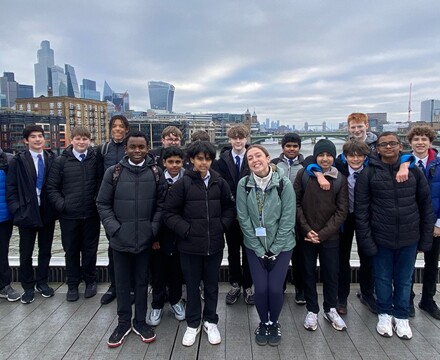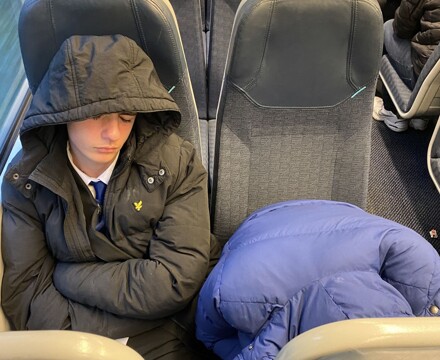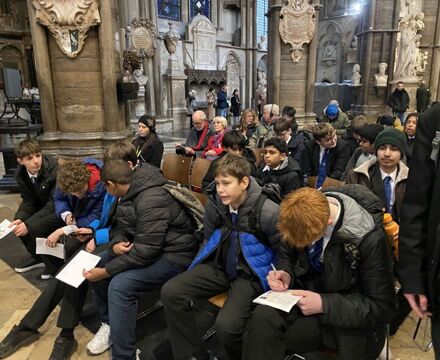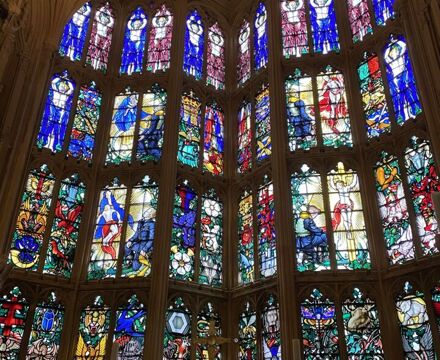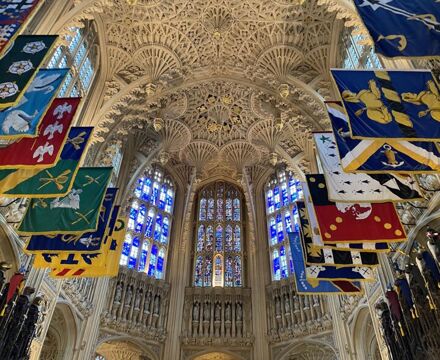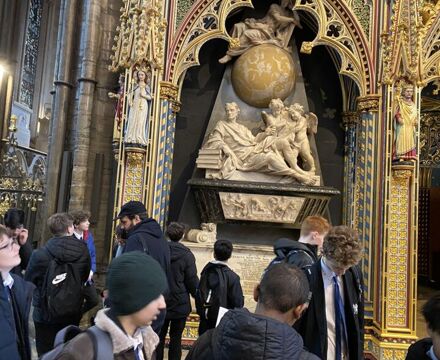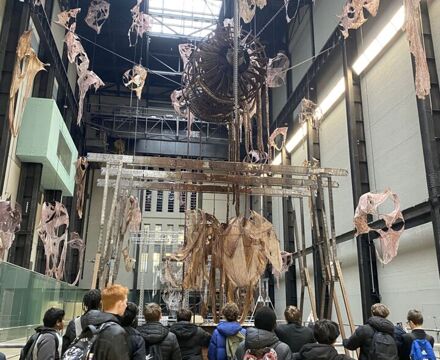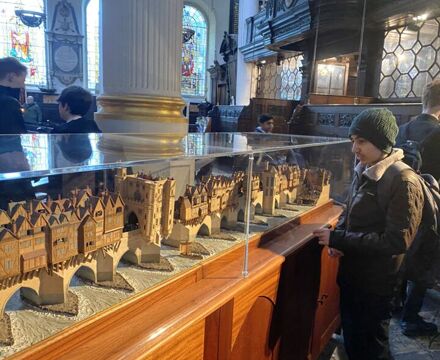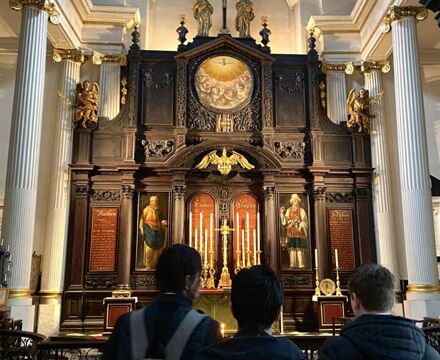- Home
- News & Dates
- News
- Super-curricular Religious Studies Trip...
Super-curricular Religious Studies Trip to London
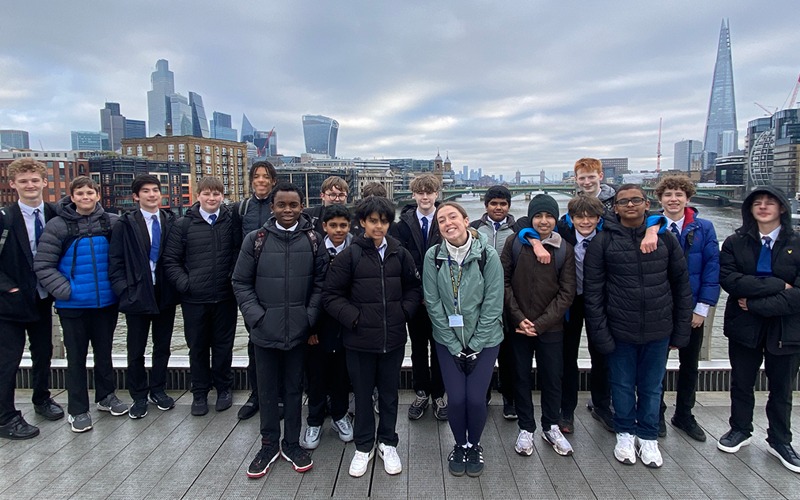
A pilgrimage to investigate religious developments in London through the ages
The secret marriage between Anne Boleyn and Henry VIII took part at Whitehall Palace in the early morning hours of January 25 1533, in a private chapel. The ceremony was kept secret to many due to the controversial nature of Henry’s desire to annul his marriage to Catherine of Aragon to marry Anne. Anne, in turn, was already carrying Henry’s child. In May 1533, Anne was escorted by river to the Tower of London where she prepared for her coronation in the royal apartments before riding to Westminster in a triumphant procession. Anne was crowned Queen in Westminster Abbey on the 1 June, when she was six months pregnant. That’s the ‘history’ part. The following years – which included her execution - saw a tumultuous upheaval in the country’s then Catholic religion that saw England break away from Rome, the dissolution of the monasteries unfold and Henry become the Head of the English Church. And it all started with Henry falling in love with Anne…
The original route of Anne’s coronation procession in 1533 provided the inspiration behind a ‘pilgrimage’ across London for our Year 9 super-curricular Religious Studies learners, as part of an investigation into religious influences in the history of our capital city.
Travelling from the Tower of London - where Anne prepared for her coronation – our students first visited All Hallows Church, the oldest church in the City of London and a living church serving today’s City community. It was founded by the Abbey of Barking in 675AD, 300 years before the Tower of London was built by William The Conqueror. An impromptu tour around the crypt museum led our students on a fascinating journey through time. The museum is in part of the original Saxon church –a Saxon arch can still be seen today and contains part of a Roman tessellated floor of a late 2nd Century domestic house amongst other Roman relics.
Next stop was the Church of Saint Magnus-the-Martyr, a Catholic church located close to London Bridge and dedicated to St Magnus, earl of Orkney, who was executed on the island of Egilsay, having been captured during a power struggle with his cousin, a political rival. He was canonised in 1135. Students were able to compare and contrast artifacts such as the pulpit and lectern to those found in a Church of England church.
Another visit, this time to St Dunstan in the East Church Garden, found the students enjoying a unique space set within the ruins of a Wren church. The church was heavily bombed during the second World War but it’s structure provides a green oasis with benches and a fountain offering tranquillity within the busy city.
The jewel in the crown, though, was a tour around Westminster Abbey – where Queen Anne enjoyed her coronation. They visited the Lady Chapel - home to the tombs of Henry’s parents Henry VII and Elizabeth of York – and then saw the effigy of Queen Elizabeth I – the only child of Anne and Henry but arguably one of our greatest Monarchs and under which the Church of England blossomed.
The trip provided our learners with a better understanding into the religious influences in the history of our capital city and there conduct throughout the tour was impeccable. 15,000 steps later, though, it was no surprise that a number of them needed a little afternoon nap on the train home to ‘re-charge’ their batteries.
Many thanks to RS Head of Subject Ms Creese for researching and putting together such an interesting and valuable trip for our boys to enjoy!!!
